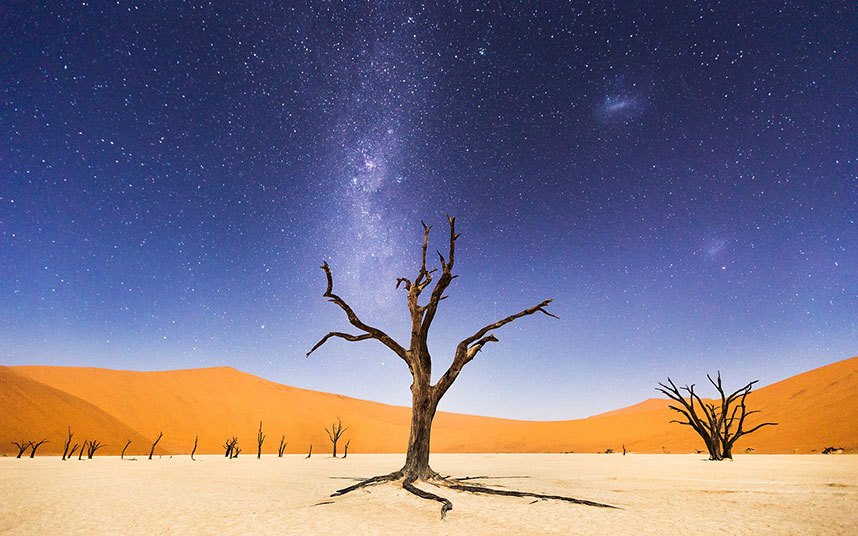The world’s oldest desert is a place of space and silence that stretches across Namibia’s entire Atlantic coast. Rivers trying to reach the sea sink into the sand, dunes change shape in the desert winds and cold waves crash against the foggy shore. There is no respite from the relentless movement of sand, just dune after dune, and a stark beauty that left us lost for words.
The striking patterns of the Namib are best seen from above on a scenic flight over the desert. We took off in a 6-seater plane from the seaside town of Swakopmund, soaring across the gravel plains to the Kuiseb River, which marks the start of the desert sands. From here the dunes rolled out as far as we could see and disappeared towards the distant Atlantic Ocean.
We felt like seabirds as the high-winged Cessna swooped over the dunes and valleys of the sand sea. We flew across the desert to the star-shaped dunes at Sossusvlei, or the “place of no return”, where we would later climb Big Daddy to catch the sunrise. The colours shifted constantly, from pale grey to burnt orange and brick red, changing with the light and cloud shadows.
One dune after another fell away below us as we made our way across the desert to the windswept coastline. We looked down on disused diamond camps and shipwrecks stranded on the beach, left to rust away in the sea fog created by the Benguela current. Flamingos and pelicans filled the lagoon near Walvis Bay and soon after we came back into land at Swakopmund.
